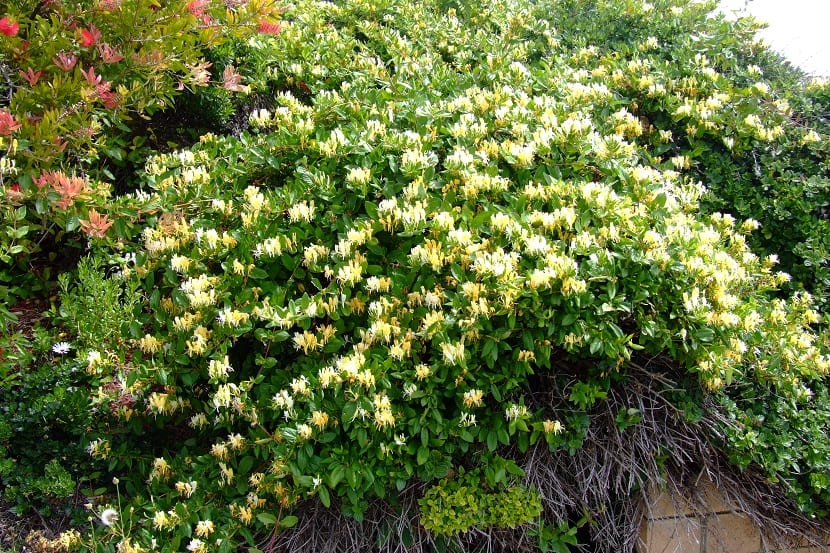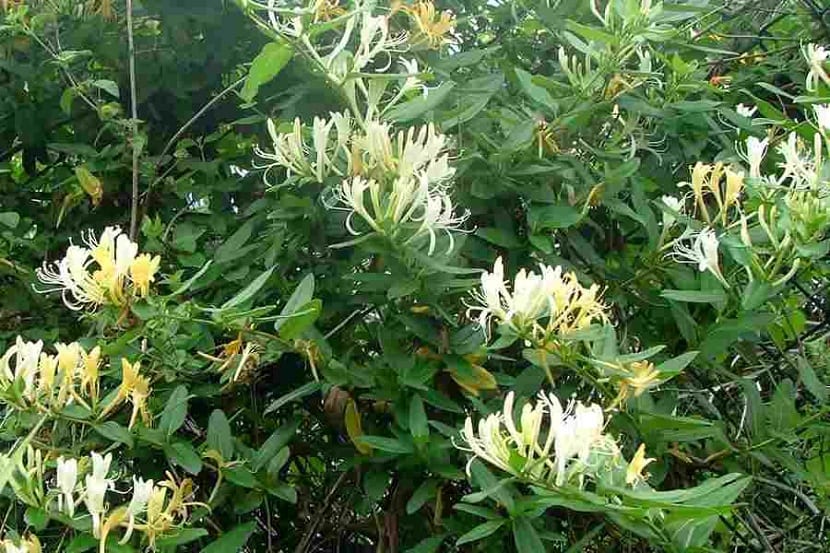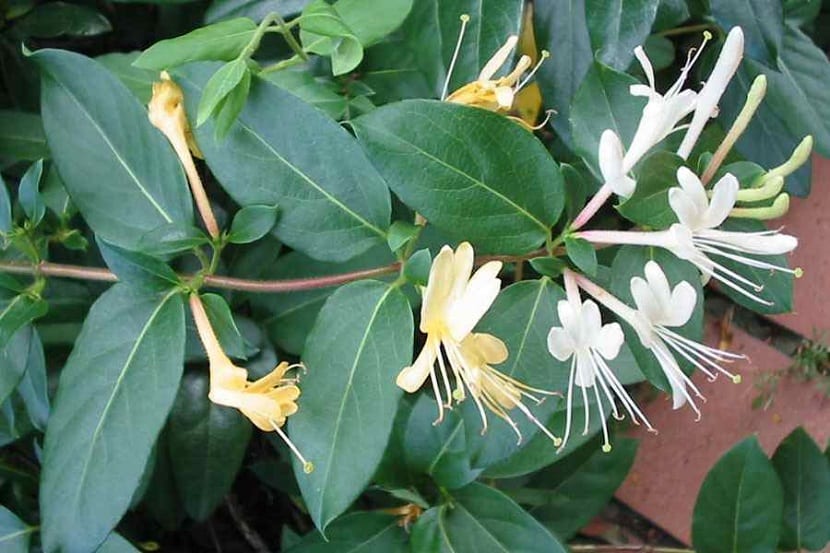
Today we are going to talk about another kind of honeysuckle which also has various uses in gardening and is quite well known. It is the honeysuckle of Japan. Its scientific name is lonicera japonica and it is also known by other common names such as Japanese honeysuckle and sweet honeysuckle. It is a type of shrub with climbing tendencies that belongs to the Caprifoliaceae family.
I hope this post interests you a lot, because we are going to explain all the characteristics, needs and care that it requires in its maintenance in the garden. Do you want to know more about the lonicera japonica?
Key features

It is a deciduous or semi-deciduous shrub. It is known for this type of blade, because it is able to preserve its leaves during the winteras long as the temperatures are not too low. It has elliptical, acuminate, and opposite leaves.
It is a shrub that can reach up to 5 meters in height and it has a fairly rapid growth. In just one year it can grow up to several meters high. Their size makes them perfect for hiding some unsightly places like more rusty wire fences, older sheds or to decorate the garden. They are highly valued in the world of decoration for being a not very demanding plant. It is also used to cover some pergolas and spacious strips on the ground.
Blooms in the spring time when the temperatures are higher, more or less around the month of May or even the beginning of June. Flowering lasts until mid-summer and produces large clusters of tubular-shaped flowers. They are white in color, although as they develop, they acquire a more yellow tone.
Flowering It is usually known for its intense smell and is quite long in time. Hence, one of its common names is fragrant honeysuckle. The fruits are groups of berries that have an oval shape that take on a red color when they develop and a characteristic smell that further enhances the overall smell of the whole plant.
Uses of lonicera japonica

This plant has various uses in several different areas. The first uses are aesthetic. They are usually the main ones and are made up of garden decoration and to cover some things that do not look good in the garden. It can be placed on walls, fences and is used to place them in hedges. In pergolas it also looks quite good since it has that climbing character that will give it a more curious touch.
As well can be used to cover soil that does not have grass and destroy the harmony of the garden or to give more privacy to your personal space. It is true that sometimes we do not feel comfortable in the garden or on the porch because people outside see us. Surely if we color some honeysuckle bushes from Japan we will feel more comfortable.
This plant also has some general medicinal uses. It is used to treat some types of conditions. It has an antibacterial, antiviral, diuretic and purifying function. It is also used to reduce fever.
Requirements and cares

We are going to describe the requirements that this plant needs so that its growth is optimal and we can take advantage of its ability to decorate and get drunk with its smell during flowering times. You need a location where it is sunny but with some shade. The hours of direct sunlight should not be too long, or it could damage your fabrics (especially in summer).
The perfect place in the house is a shadier, north-facing site. That way you will not have problems with direct sun in hot months and will be able to perform better as a climber. Regarding temperatures, Ideally, they should be kept in a range between 10 and 25 degrees. During the winter there may be times that it is difficult to maintain these temperatures, but it can resist for a while. In summer, if we place it in the shade or semi-shade, it will not have a problem with high temperatures.
Regarding irrigation, it is not demanding at all. It is a highly demanded plant due to its low irrigation requirements and its high resistance to drought. The indicator that will tell us when to water again is that the soil is dry. In the colder months it is not necessary to water unless there are months and months that it does not rain at all.
It does well in almost all types of soils. The ideal is to place ourselves in those who have more moisture and are composed of marl enriched with organic matter.
Maintenance, pests and diseases

As we have mentioned before, it is a plant that has a fairly vigorous growth, so it becomes invasive. It is better to control its growth through pruning. Pruning should be done after blooming, removing the outer part to avoid dead zones, both indoors and outdoors. Thus, we will be stimulating the development of new offspring. It is best to make a rejuvenation pruning every 3 or 4 years to strengthen it well.
Among its diseases we find the wilting of its leaves caused by a fungus that reproduces in rainy seasons. To deal with it, fungicidal treatments such as copper oxychloride can be used.
If you can see that the leaves are covered by a white mycelium, it is that it has been attacked by a fungus and suffers powdery mildew. It can be fought with an antioidium fungicide such as sulfur.
As for its pests, it can be attacked by mealybugs, aphids and the cigarette caterpillar.
We can multiply the honeysuckle of Japan for seeds that we will plant in the early spring season. When the plant is young, they must be kept separately in small pots and moved when it is large enough. It propagates quite well by wooden stakes in spring and by layering, since the guides can take root anywhere they touch the ground.
I hope that with this information you can enjoy more of the lonicera japonica.
Thank you very much, extensive information, easy to retain
We like to know that you liked it, Raquel.